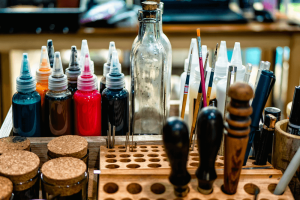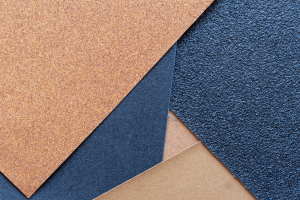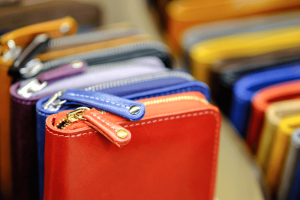Leather, being a durable material, is a popular choice for clothing, accessories, and furniture. However, over time, the color can darken, or you may simply wish to update its appearance.
In this article, we’ll guide you through 6 different methods to lighten leather, discuss the necessary materials and tools for each method. Let’s dive in!
How To Lighten Leather: 6 Effective Methods
Here, we will give you 6 methods with detailed information with the best results:
Method 1: Using Deglazer and leather dye
Materials and tools needed
- Leather dye in a lighter color than your current leather
- Leather deglaze
- Leather sealer or finish
- Sponge or dye applicator
- Gloves
- Clean, soft cloths
- Painter’s tape (optional)
Step-by-Step guide
1. Remove any hardware or accessories from your item to prevent them from coming into contact with the dye. You can also use painter’s tape to protect areas that you don’t want to dye.
2. Clean the leather surface and remember to wear gloves. Also, apply a leather deglazer to a clean cloth and gently rub it over the entire surface. The deglazer will help remove dirt, oils, and any previous dye or finish. Moreover, ensure a better bond between the leather and the new dye.
3. After cleaning the surface, let it air dry for about 30 minutes to ensure it’s completely dry before applying the new dye.
4. Afterward, you continue to put on gloves, dampen a sponge, and dye the applicator in the lighter leather dye. Apply the dye to the surface using even, circular motions. Start from one corner of your item and work your way across, ensuring an even application.
5. In the next step, allow the dye to dry completely for about 30-60 minutes. After it’s dry, use a clean, soft cloth to gently buff the surface. This will help remove any excess dye and give the leather a smooth, even finish.
Additionally, depending on the desired shade, you may need to apply additional layers of dye. Allow each layer to dry completely and buff the leather before applying the next layer. Repeat this process until you reach the desired lightness.
6. After you’ve achieved the desired color. You should apply a leather sealer or finish to protect the new dye and keep the color from fading or rubbing off. Follow the manufacturer’s instructions for the best results.
7. Lastly, after the sealer or finish has dried, reattach any hardware or accessories. These were removed at the beginning of the process.

Method 2: Mixing soap and warm water
Materials and tools needed
- Mild soap (such as saddle soap or gentle dish soap)
- Warm water
- Two soft, clean clothes or sponges
- A bowl
- Leather conditioner (optional)
Step-by-step guide
1. In a bowl, mix a few drops of mild soap with warm water until you get a slightly soapy solution. Make sure not to use harsh detergents or chemicals, as they may damage the fabric.
Before applying the soapy mixture to the entire surface, test it on a small, hidden area. Also, ensure it won’t cause discoloration or damage.
2. Dampen one of the soft cloths or sponges in the soapy solution, making sure to wring out any excess water. You continue gently to rub the damp cloth or sponge over the surface in circular motions. Remember to focus on one section at a time. Be careful not to soak the leather or scrub too hard, as this may cause damage.
As you clean each section, use the second clean, dry cloth to remove any soap residue and excess moisture. This will help prevent streaks and water spots.
3. After you’ve cleaned the entire surface, let the leather air dry completely away from direct sunlight or heat sources. This can cause it to crack or fade.
4. Lastly, once the leather is completely dry, you may want to apply a leather conditioner. This will help restore its suppleness and prevent drying or cracking. Follow the manufacturer’s instructions for the best results.
Method 3: Applying Oxalic acid
Materials and tools needed
- Oxalic acid crystals or powder
- Water
- Rubber gloves
- Safety goggles
- Mixing container (non-metallic)
- Sponge or soft cloth
- Clean, dry cloth
- Leather conditioner
Step-by-step guide
When you choose this method, before handling oxalic acid. Remember to put on rubber gloves and safety goggles to protect your skin and eyes. Be careful, Oxalic acid is a strong chemical, and it can cause irritation or burns if not handled carefully. Always work in a well-ventilated area.
Additionally, in a non-metallic mixing container, dissolve the oxalic acid crystals or powder in water. Always follow the manufacturer’s instructions for the correct proportions. Make sure to mix the solution thoroughly.
1. Before applying the oxalic acid solution to the entire material’s surface, test it on a small, hidden area to ensure it won’t cause discoloration or damage. Allow the solution to sit for a few minutes, then rinse and let it dry to check the results.
2. In the process of applying the oxalic acid solution. Should wear gloves, and dip a sponge or soft cloth into the prepared oxalic acid solution. Also, gently apply it to the surface. Moreover, need to work in small sections and use even, circular motions to spread the solution.
Furthermore, allow the oxalic acid solution to sit on the leather surface for a few minutes. The leather will gradually lighten as the oxalic acid reacts with the existing dye.
3. After the solution has sat for a few minutes, rinse the leather thoroughly with clean water. This helps remove all traces of oxalic acid. Be sure to rinse all treated areas to prevent any residue from causing damage.
4. Let the leather air dry completely away from direct sunlight or heat sources, which can cause it to crack or fade.
5. Finally, once it is dry, apply a leather conditioner with a clean, dry cloth to maintain its softness and durability. Follow the manufacturer’s instructions for the best results.

Method 4: Sandpaper solution
Materials and tools needed
- Fine-grit sandpaper (such as 600-grit)
- Clean, soft cloth
- Leather conditioner
- Sanding block (optional)
Step-by-step guide
1. It’s important to choose the right sandpaper. Should select a fine-grit sandpaper, such as 600-grit, to avoid damaging the leather. Be careful, if you use coarse-grit sandpaper may scratch or damage the surface.
Moreover, test sanding on a small, inconspicuous area. Before sanding the entire surface, should test the sanding process on a small, hidden area. Also, ensure it won’t cause damage or discoloration.
2. In the sanding process, wrap the sandpaper around a sanding block or use your fingers to apply even pressure. Gently rub the sandpaper over the leather surface in circular motions, being careful not to apply too much pressure. The goal is to remove a thin layer of the dye, gradually lightening the leather.
As you sand the leather, check the progress frequently. This will ensure you’re not removing too much dye or damaging it. Stop sanding once you’ve reached the desired shade.
3. After sanding, use a clean, soft cloth to remove any dust or debris from the leather surface.
4. In the final step, apply a leather conditioner with a clean, soft cloth to restore its softness and protect it from drying out. Should follow the manufacturer’s instructions for the best results.

Method 5: Diluted bleach solution
Materials and tools needed
- Bleach
- Water
- Rubber gloves
- Safety goggles
- Mixing container (non-metallic)
- Sponge or soft cloth
- Clean, dry cloth
- Leather conditioner
Step-by-step guide
Before handling bleach, it’s essential to put on rubber gloves and safety goggles to protect your skin and eyes. Because bleach is a strong chemical, it can cause irritation or burns if not handled carefully. Always work in a well-ventilated area.
1. In a non-metallic mixing container, mix a small amount of bleach with water. Should follow the manufacturer’s instructions for the correct dilution. Make sure to mix the solution thoroughly.
Additionally, before applying the bleach solution to the entire material surface. You should test it on a small, hidden area to ensure it won’t cause discoloration or damage. Allow the solution to sit for a few minutes, then rinse and let it dry to check the results.
2. You should remember to wear gloves, dip a sponge or soft cloth into the prepared bleach solution. Moreover, gently apply it to the leather surface. Should work in small sections and use even, circular motions to spread the solution.
Always keep a close eye on the leather as it lightens, and do not leave the bleach solution on for too long. Prolonged exposure to bleach can weaken or damage it.
3. After the leather has reached the desired shade, rinse it thoroughly with clean water. This could help remove all traces of the bleach solution. Additionally, be sure to rinse all treated areas to prevent any residue from causing damage.
4. Let the leather air dry completely away from direct sunlight or heat sources. Because to avoid causing the fabric to crack or fade.
5. In the final step, it’s crucial to apply a leather conditioner with a clean, dry cloth to maintain its softness and durability. Should follow the manufacturer’s instructions for the best results.
Method 6: Natural oil
Materials and tools needed
- Natural oil (such as olive oil or coconut oil)
- Clean, soft cloths
- Bowl (optional)
Step-by-step guide
You should choose natural oil like olive oil or coconut oil. Also, avoid using harsh chemically treated oils. Because they may damage the leather.
1. Test it on a small, hidden area to ensure it won’t cause discoloration or damage. Allow the oil to absorb for a few hours and check the results.
If using a solid oil like coconut oil, warm it up slightly in a bowl until it becomes liquid. Besides, if you use olive oil, pour a small amount into a bowl for easy access.
2. Dip a clean, soft cloth into the oil and gently rub it onto the leather surface in circular motions. Next, apply a thin, even layer, being careful not to over-saturate the leather.
3. Afterward, let the oil sit on the leather surface for a few hours. Also, allowing it to penetrate the leather and lighten the dye. Remember to keep your fabric away from direct sunlight or heat sources during this time to avoid drying or cracking.
4. After the oil has been absorbed for a few hours. You should use a clean, dry cloth to gently wipe off any excess oil from the leather surface.
Additionally, if the leather hasn’t reached the desired shade after the first application. You can repeat the process, allowing the oil to absorb for a few hours between applications.
Caring for lightening
After you’ve successfully lightened your leather using one of these methods, it’s important to maintain its new appearance by following proper care practices:
- You need to clean your leather items regularly using a mild leather cleaner and a soft cloth to remove dirt, stains, and residue.
- Additionally, should also condition the material and should use a high-quality leather conditioner to keep it soft, supple, and resistant to cracks or damage and protect your item the best it can.
- It’s important to keep your items away from direct sunlight, extreme temperatures, and humidity, which can cause crack leather and discoloration over time.
- When not in use, be sure to store your items in a cool, dry place and use dust covers or bags to keep them clean and protected to help maintain their longevity.

Conclusion
Lightening leather can give your favorite items a fresh, new look or help you match them with your updated style. With these six methods, you can choose the one that best suits your needs and comfort level. Just remember to take proper care of your lightened item to ensure it stays looking great for years to come.
FAQs
- Can I lighten any type of leather?
While most types of leather can be lightened, some delicate or exotic leathers may not respond well to these methods. To protect your items, you always test a small, inconspicuous area before proceeding with the entire item.
- How can you make dark leather shoes lighter?
While most types of leather can be lightened, some delicate or exotic leathers may not respond well to these methods. To protect your items, you always test a small, inconspicuous area before proceeding with the entire item.
- How can I prevent my leather from darkening over time?
To prevent your leather from darkening, Remember to keep it away from direct sunlight, avoid exposing it to high temperatures or humidity, and clean and condition it regularly. Additionally, you could use UV-protectant spray which helps protect your items from sun damage.



